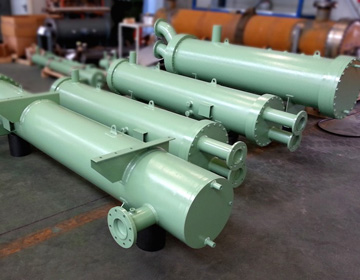Heat exchangers play a vital part in various artificial processes, and their effective operation relies on the proper functioning of specific factors or reserves. also an overview of heat exchanger spares and functions reserves and their functions
Tubes
- Function – The heat exchanger tubes are used for the different purposes analogous as heating or re- heating, cooling of feasts, fluids or air. They give a large face area for heat exchange to do.
Tube Plate
- Function – Fluid in the vessel passes energy to the fluid in the tubes without any contact between the two fluids, maintaining the relationship between them and preventing leaks.
Shell
- Function – The shell fills the tube and contains the liquid, therefore icing respectable water and heat exchange between the tube and the shell.
Baffle plate
- Function – A cocoon plate is a plate designed to restrain or regulate the flux of fluid. They help bypass and increase heat for better thermal performance.
Seals and Gaskets
- Function – Gaskets seal a connection between two factors or flanges that have flat shells, while seals are used between machine corridor, pumps, and shafts that rotate.
Expansion common
- Function – Expansion joints control thermal expansion and compression, reducing stress on electrical factors and preventing damage.
Snoots
- Function – snoots serve as entry and exit points for the fluid courses, easing controlled flux and to distribute fluid through a heal exchanger matrix.
End Caps
- Function – End caps close off the ends of the heat exchanger shell, furnishing structural support and constraint for the fluids.
Support Structure
- Function – Mode of Operation A support( similar as a type or type) carries the weight of the heat exchanger and maintains its position within the body.
Fins or Finned Tube
- Function – Fins or finned tubes increase increase the rate of heat transfer to or from the terrain by adding convection.
Thermal insulation
- Function – Thermal sequestration minimizes heat loss through the heat exchanger, increases energy effectiveness and protects workers from hot spots.
Pressure Relief bias
- Function – used to give a means of venting spare pressure which could rupture a boiler or pressure vessel. A pressure relief device is the last line of defense for safety.
Temperature and Pressure Detectors
- Function – Detectors cover temperature and pressure conditions, furnishing vital data for system control and conservation.
Regular examination, conservation, and relief of these heat exchangers spares and functions reserves are essential for sustained performance, energy effectiveness, and safety in artificial processes. Proper care ensures that the heat exchanger continues to operate effectively, meeting the demanded heat transfer demands.

